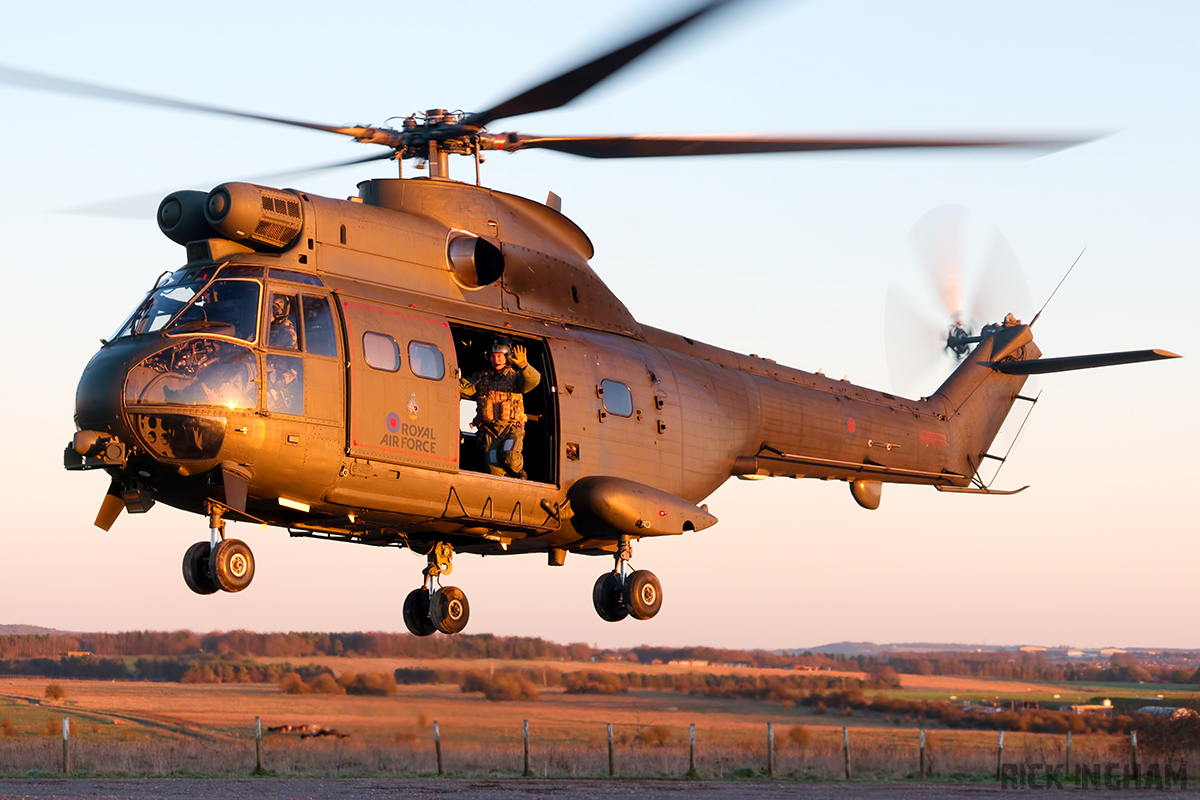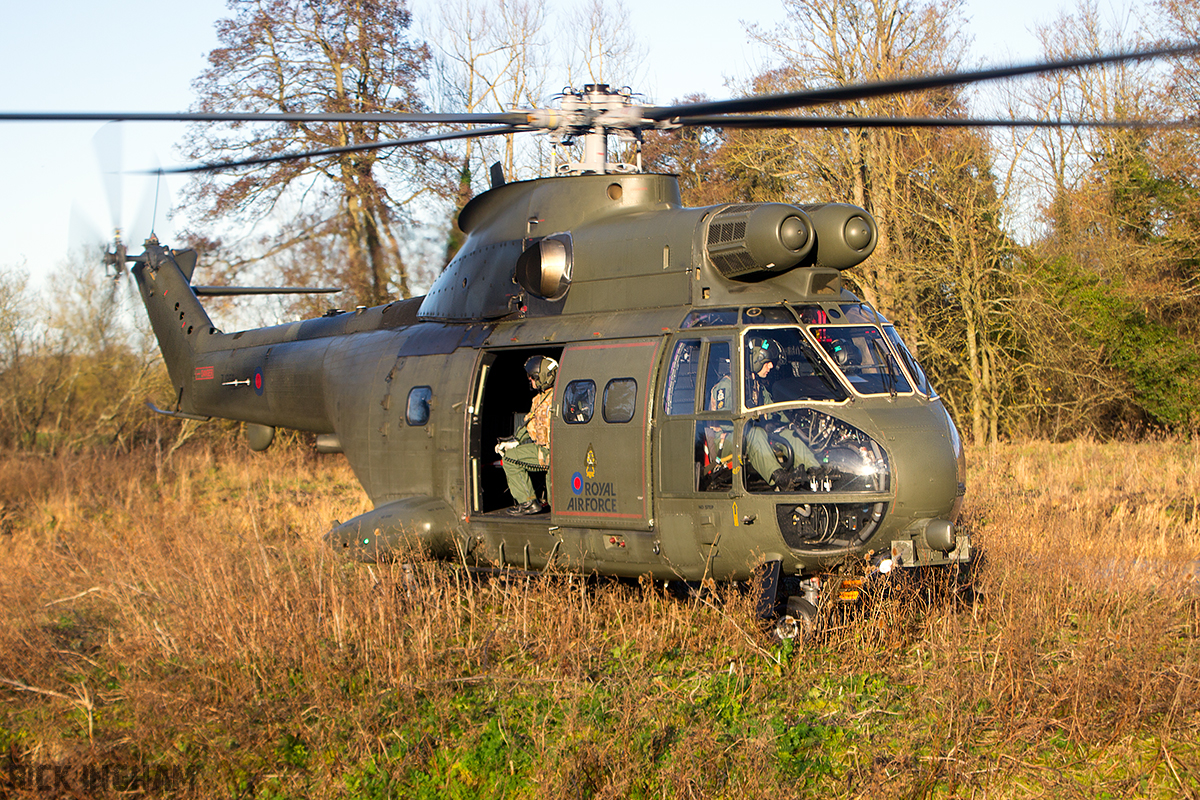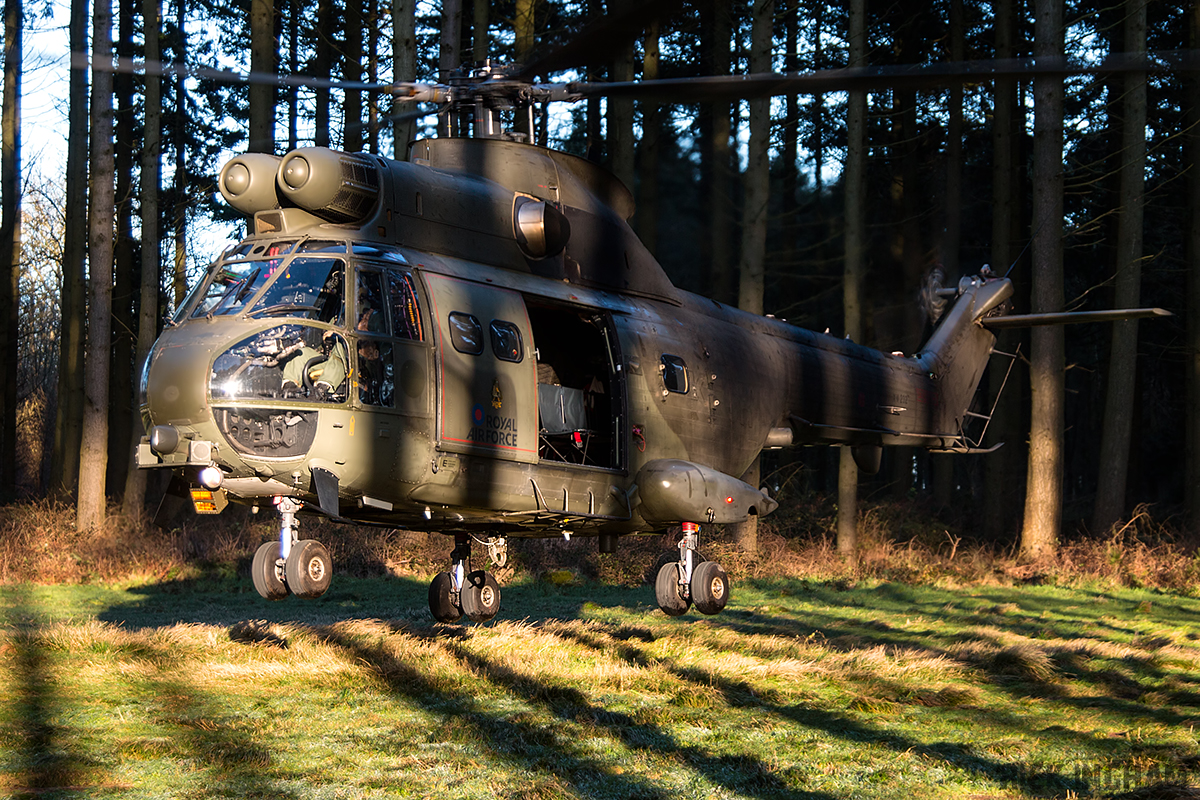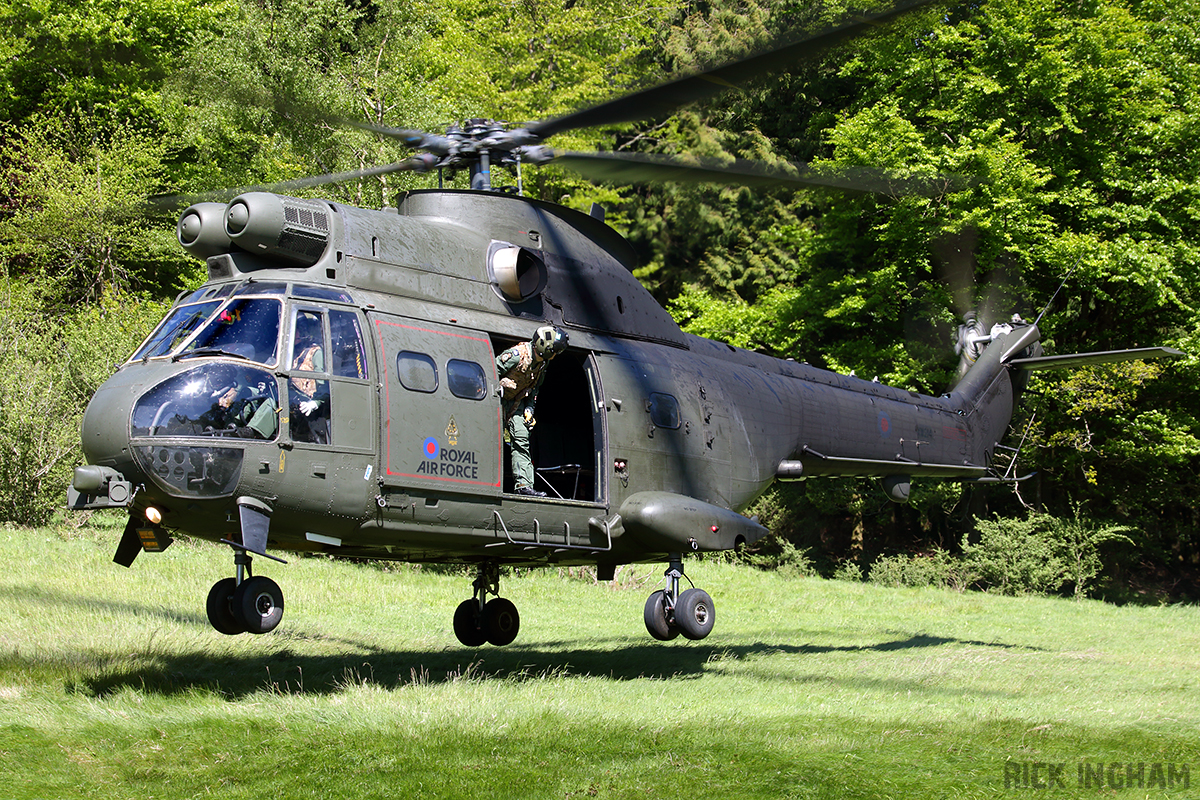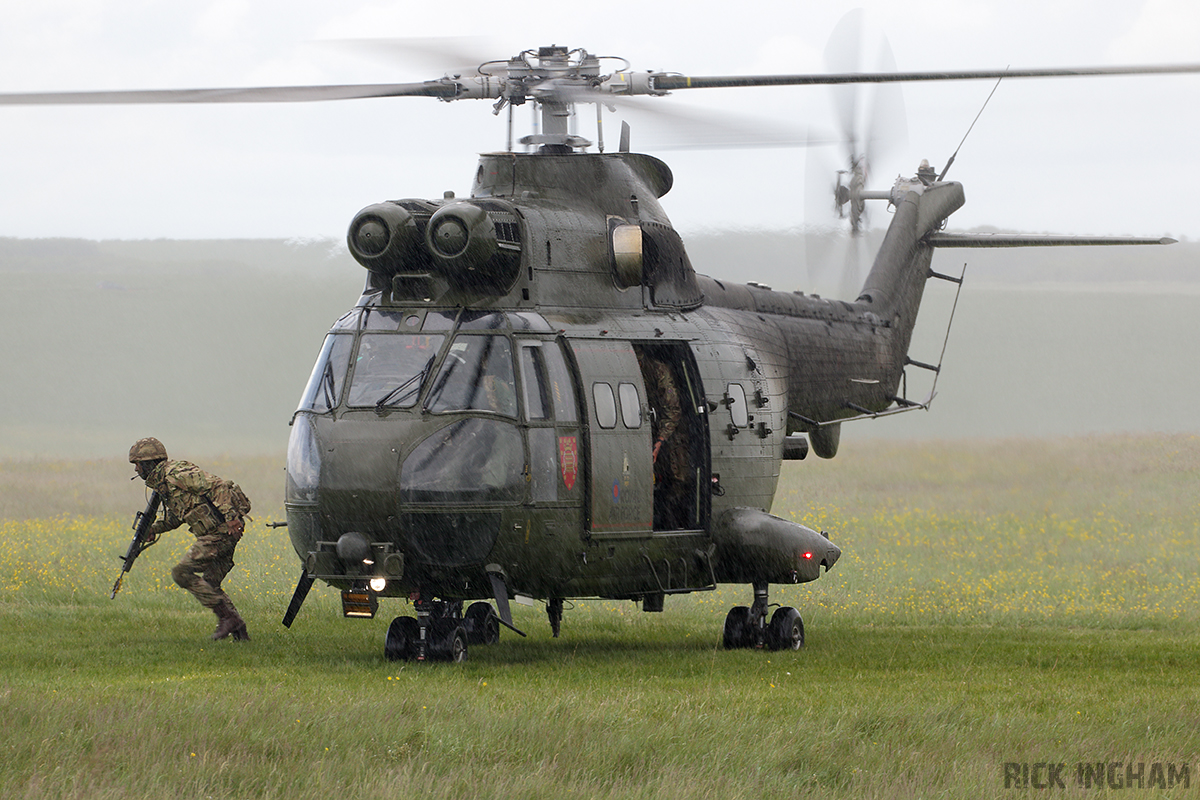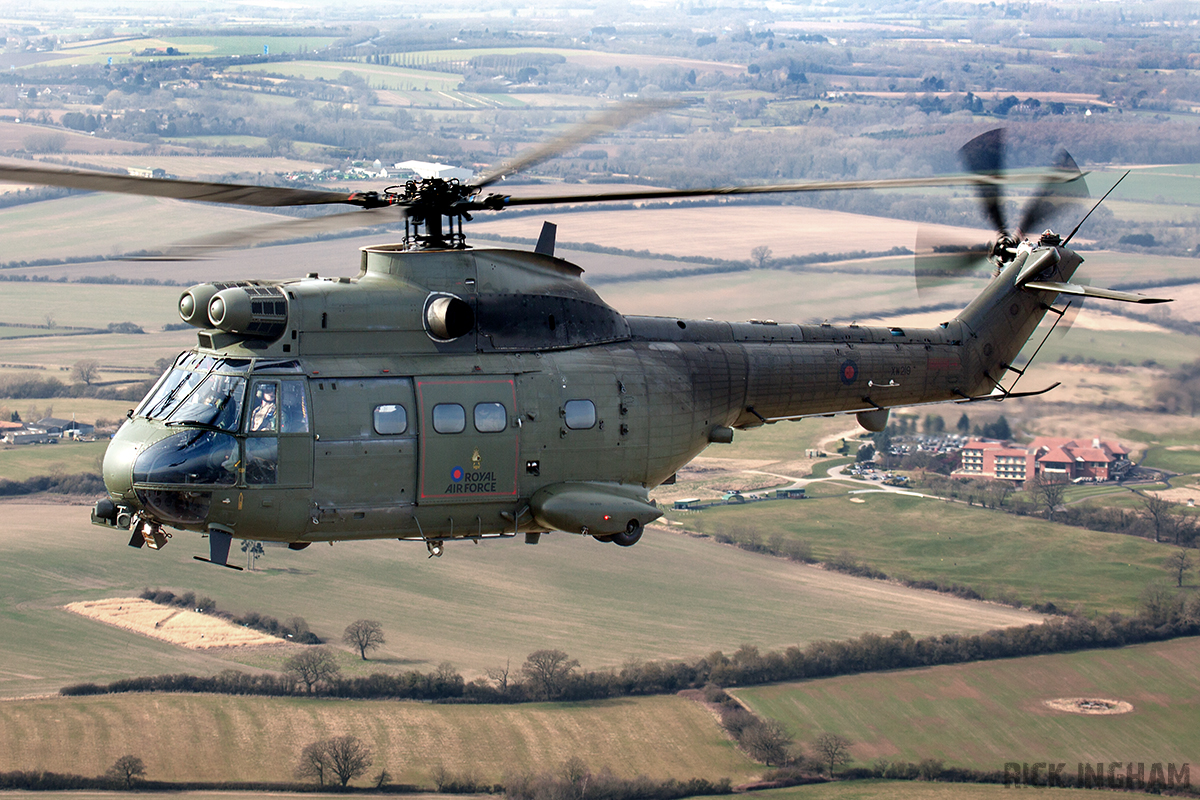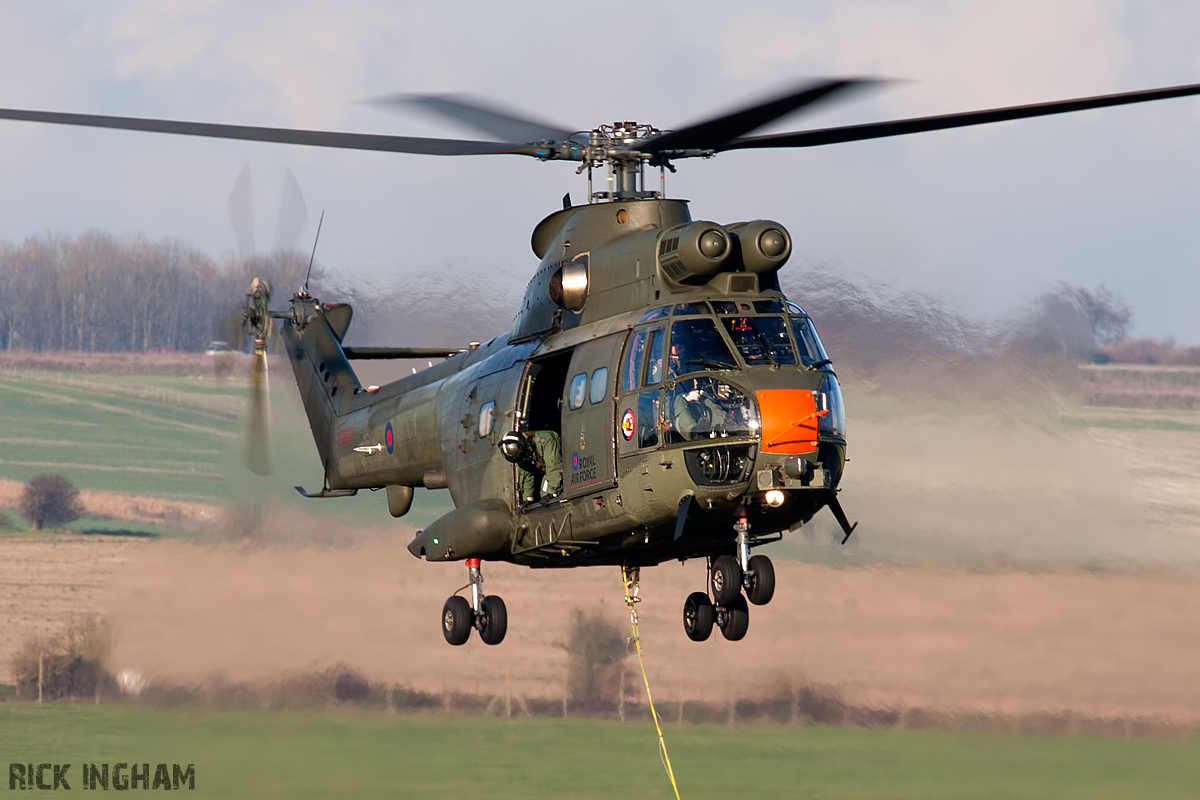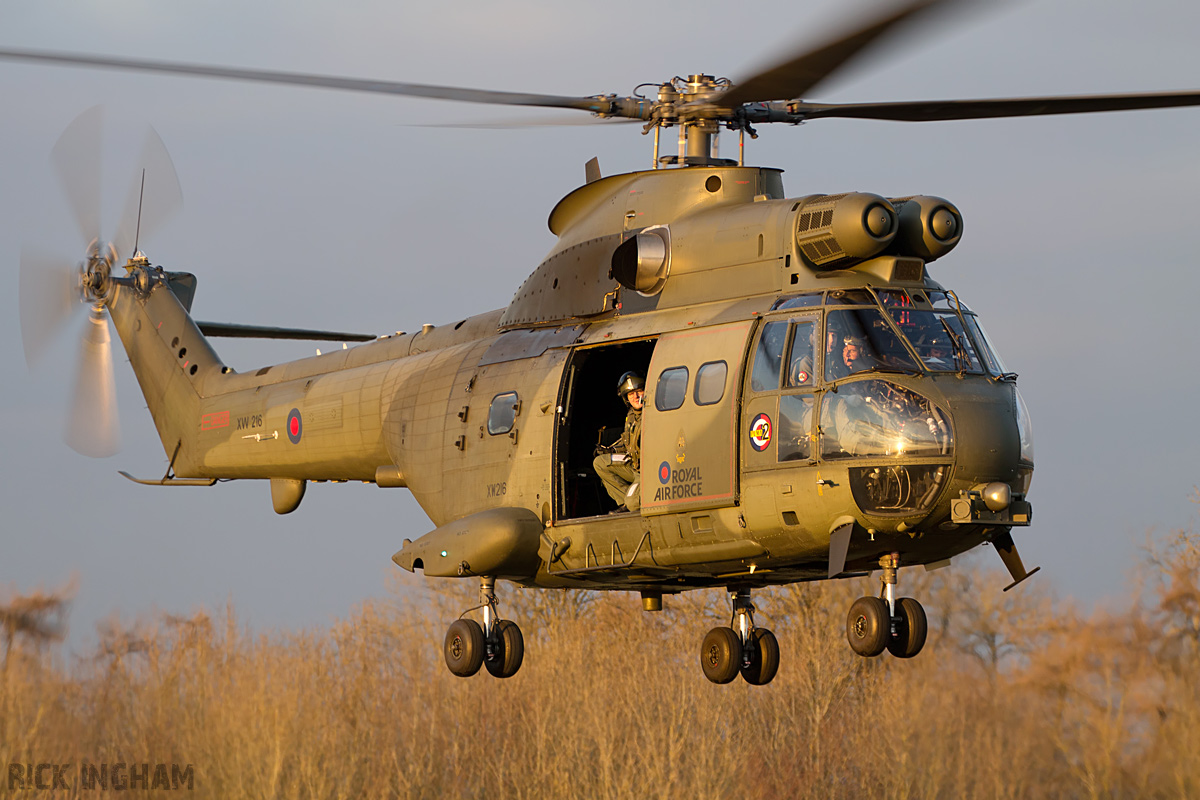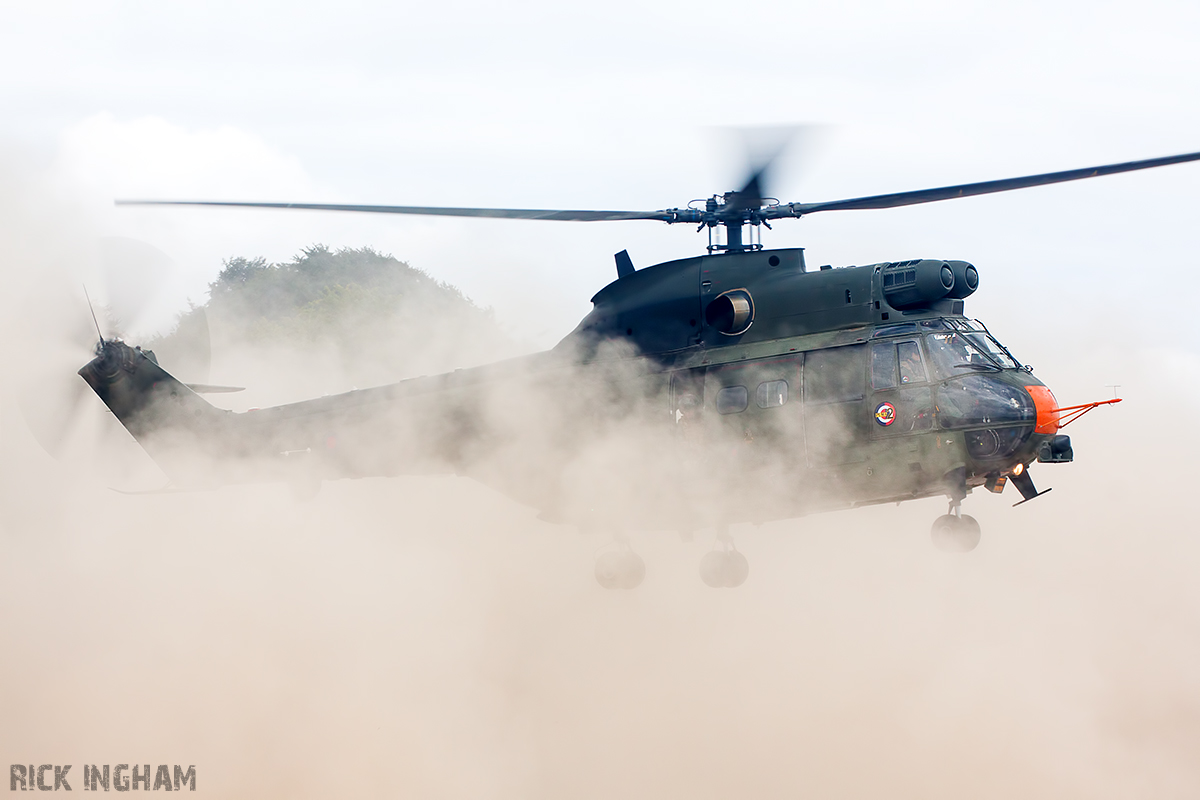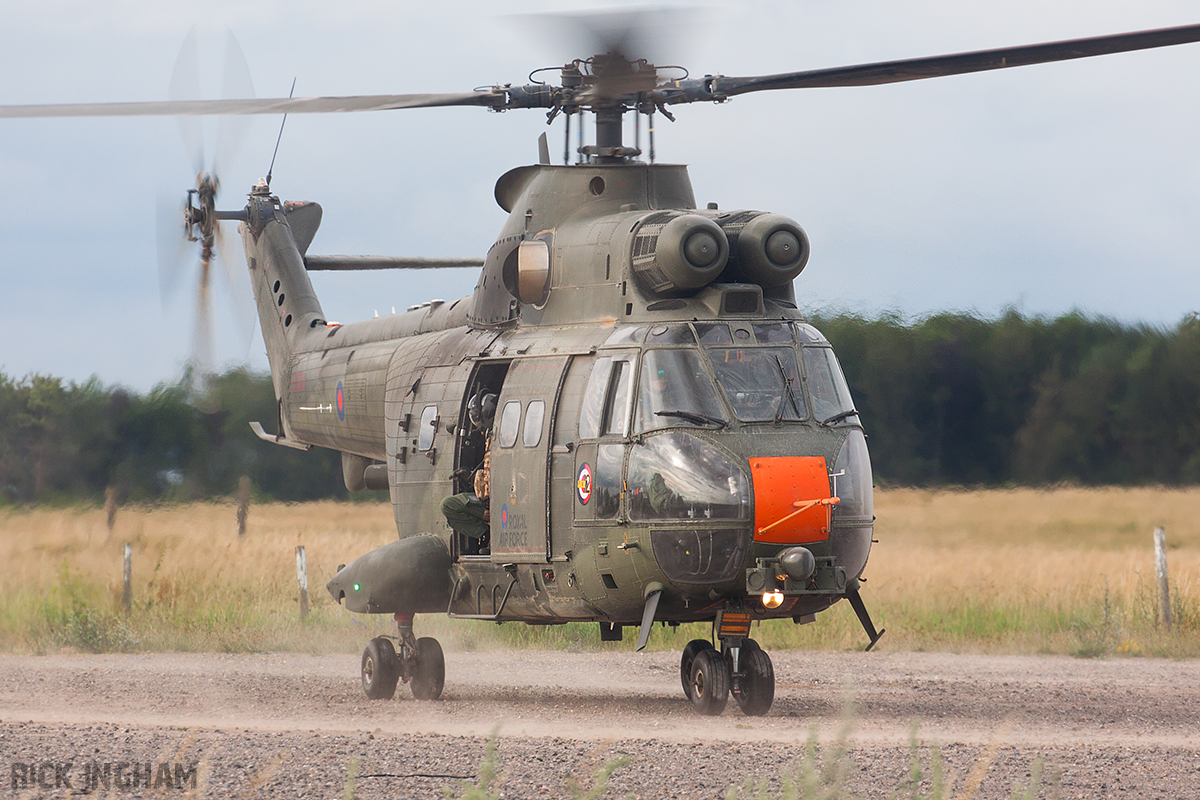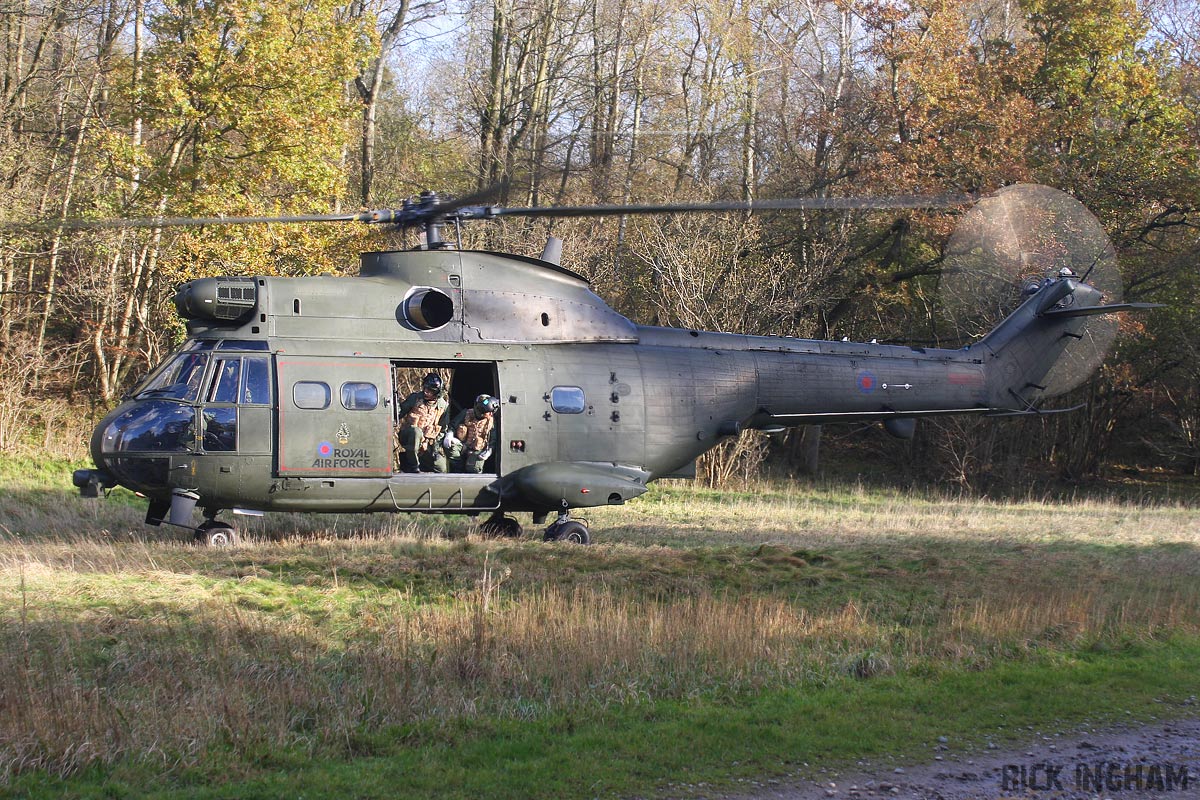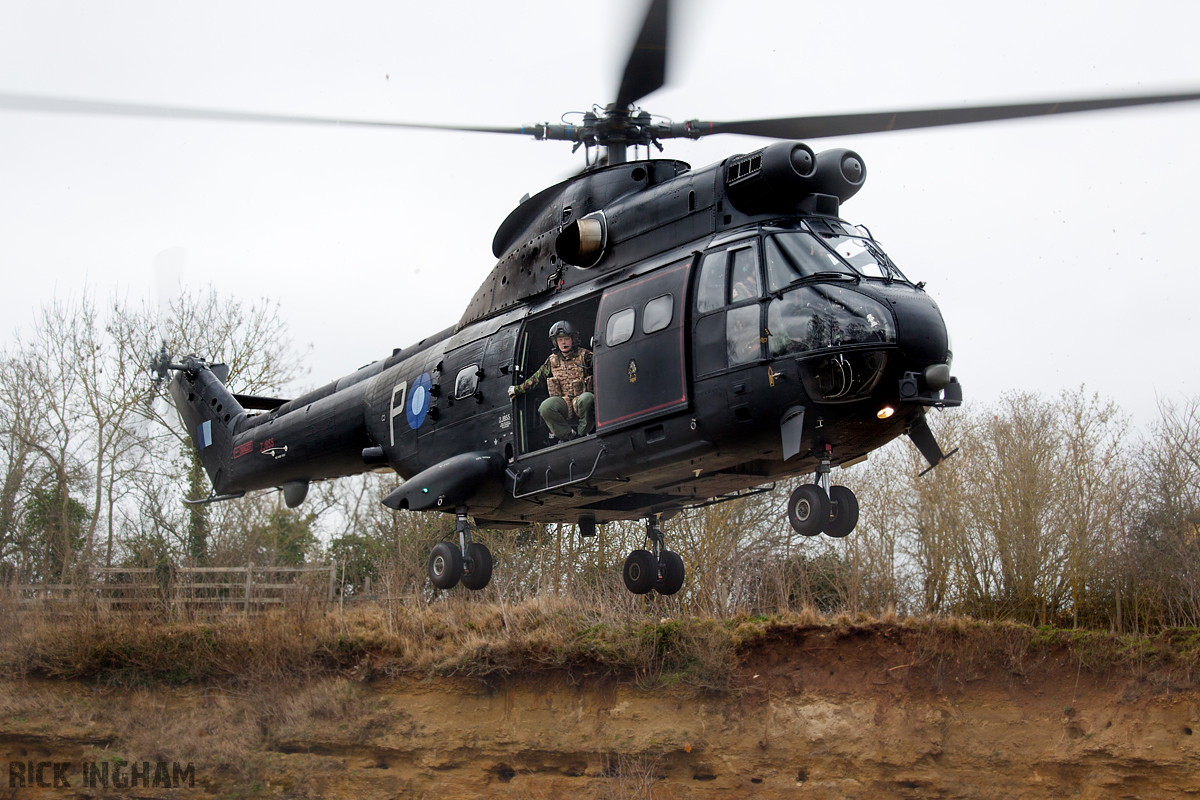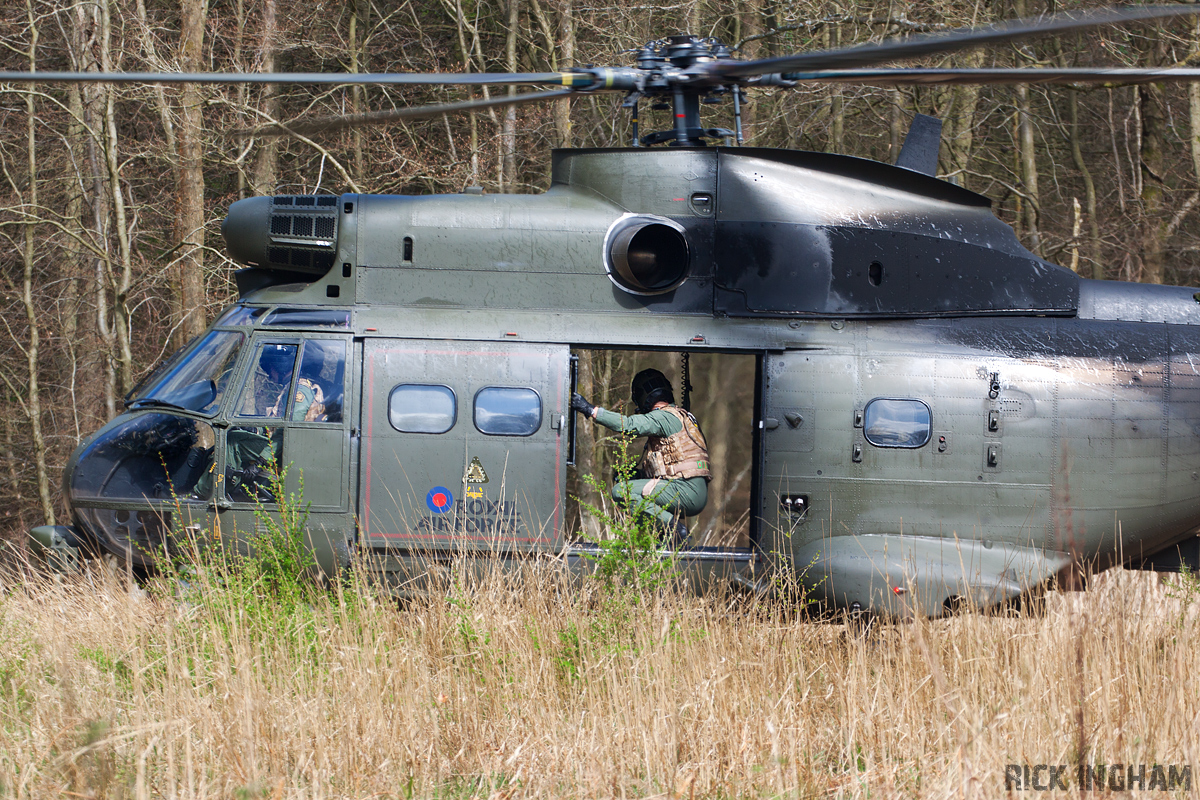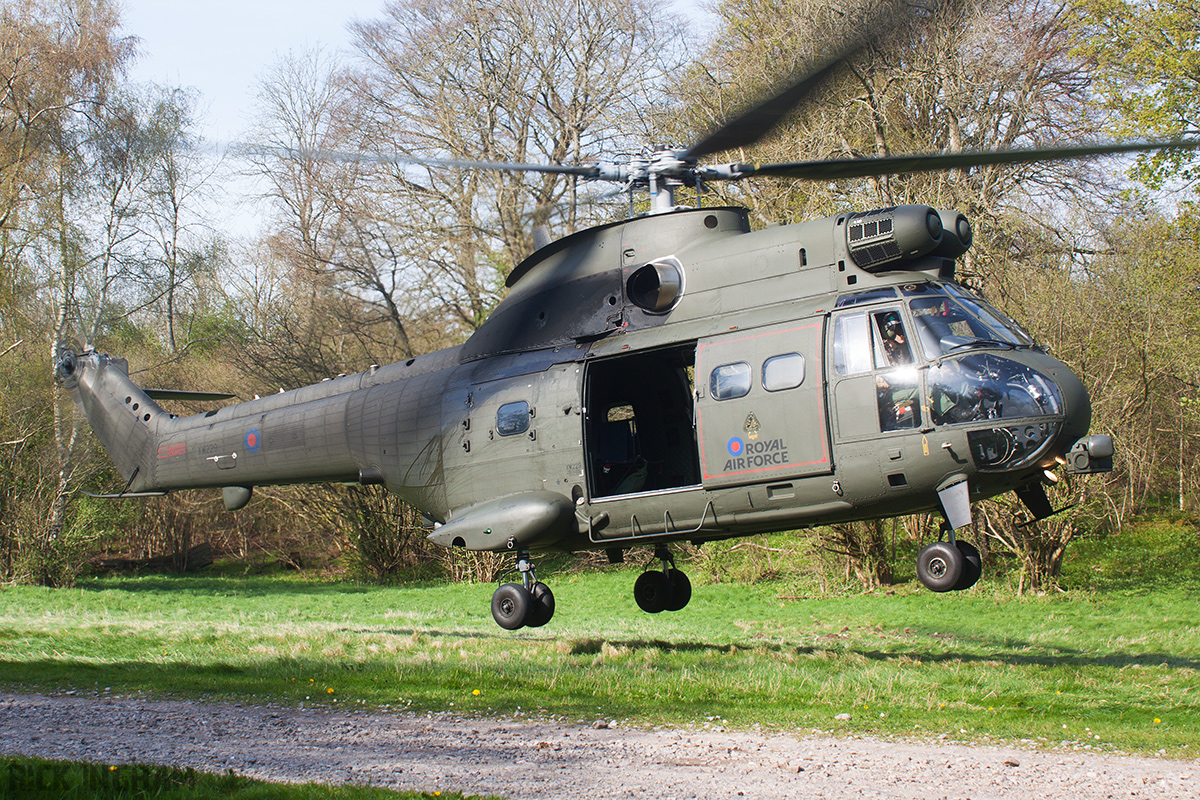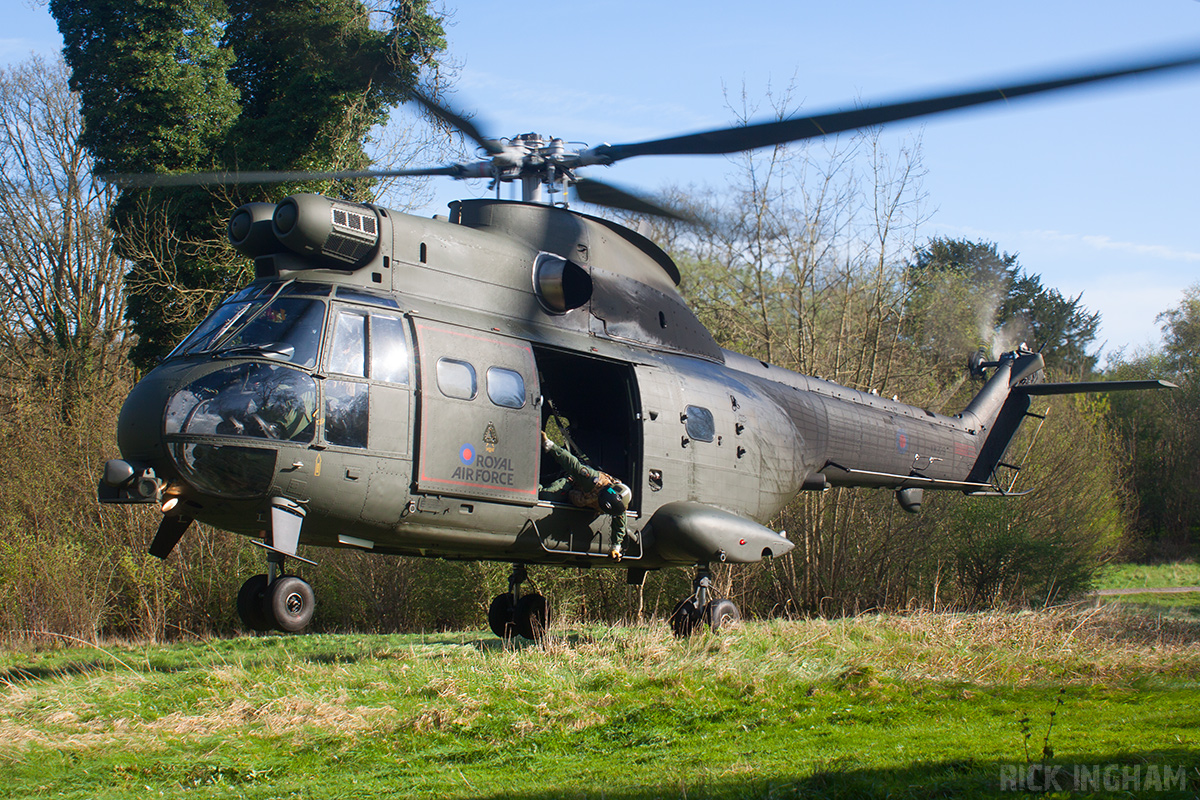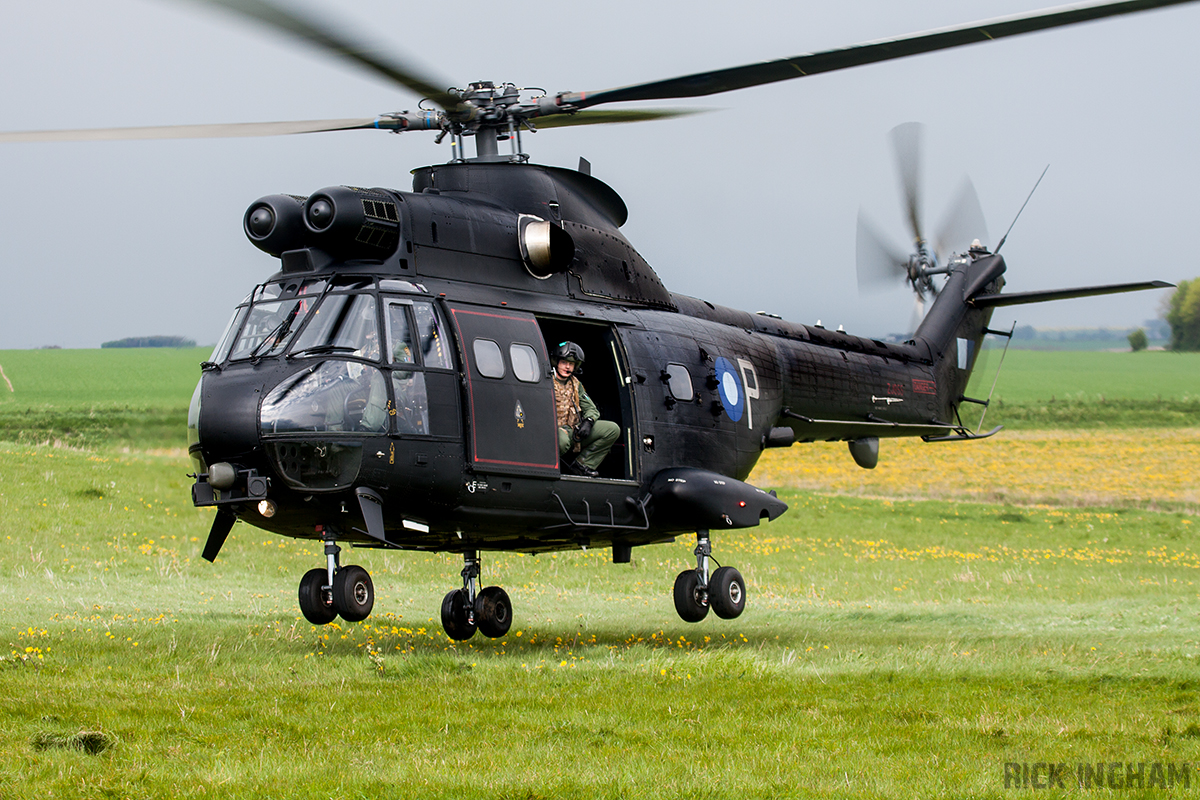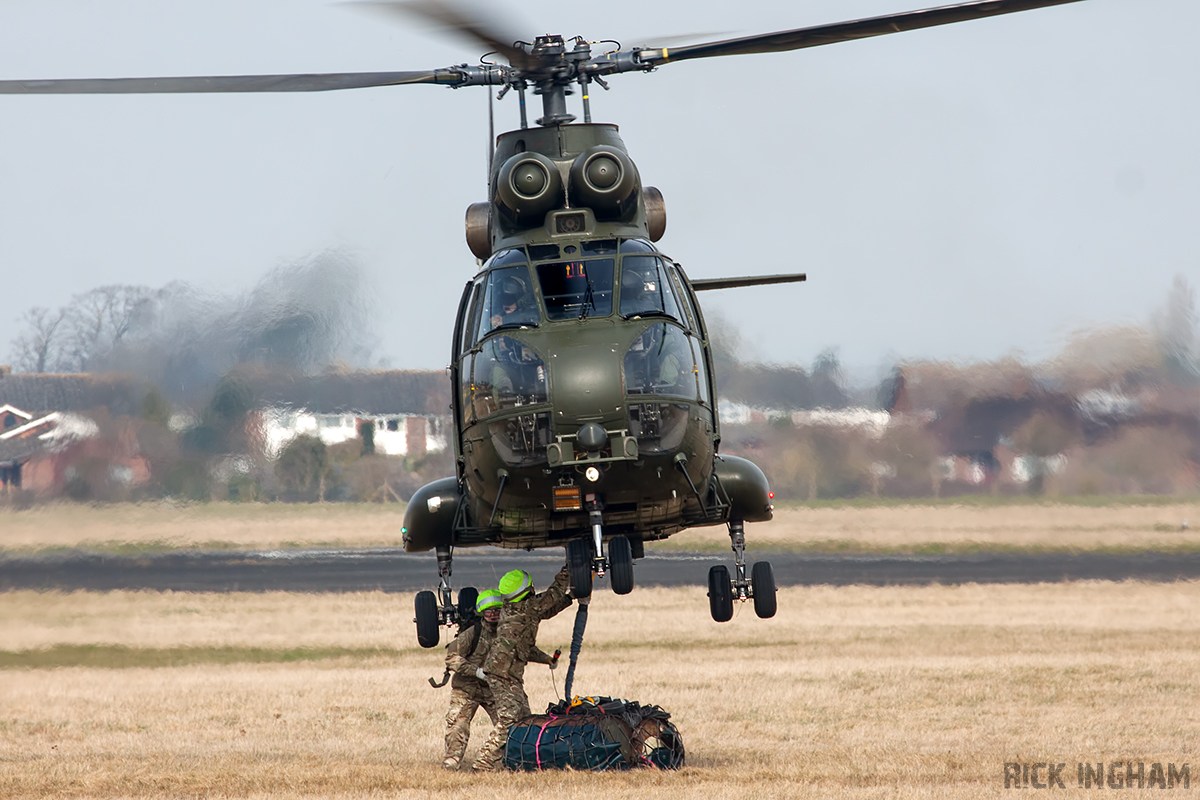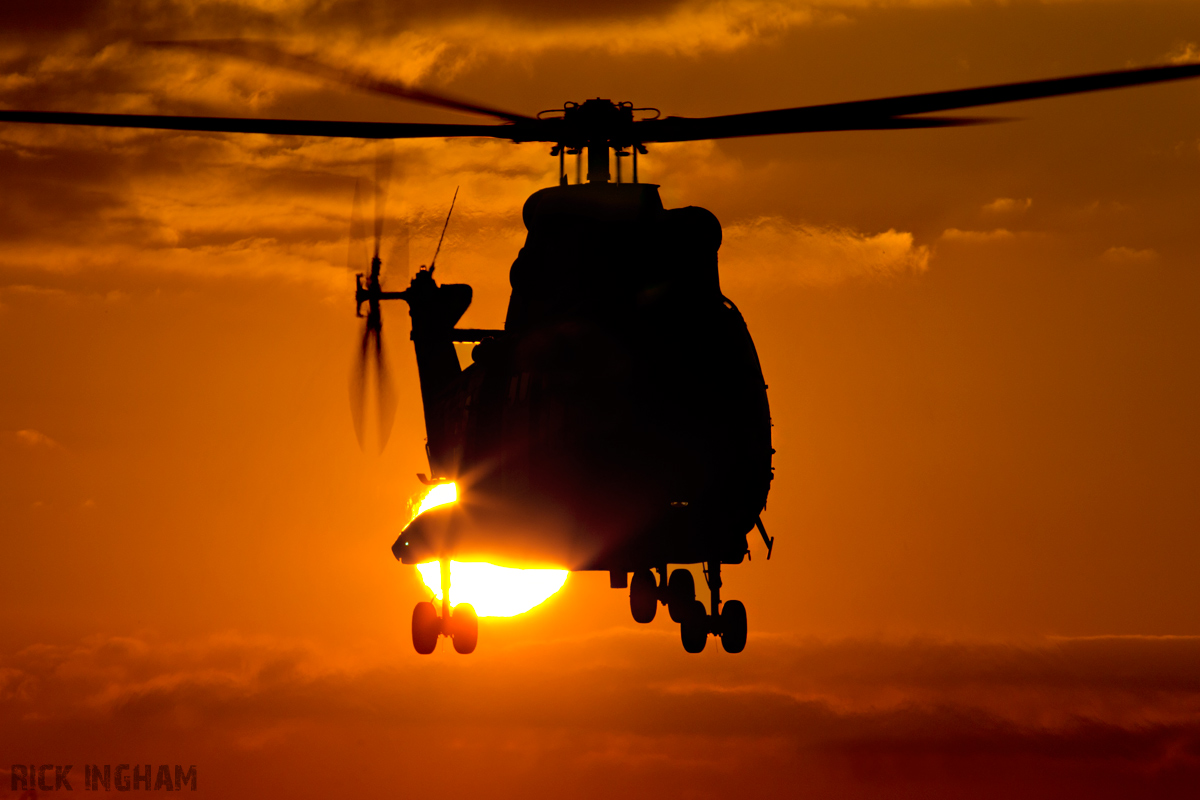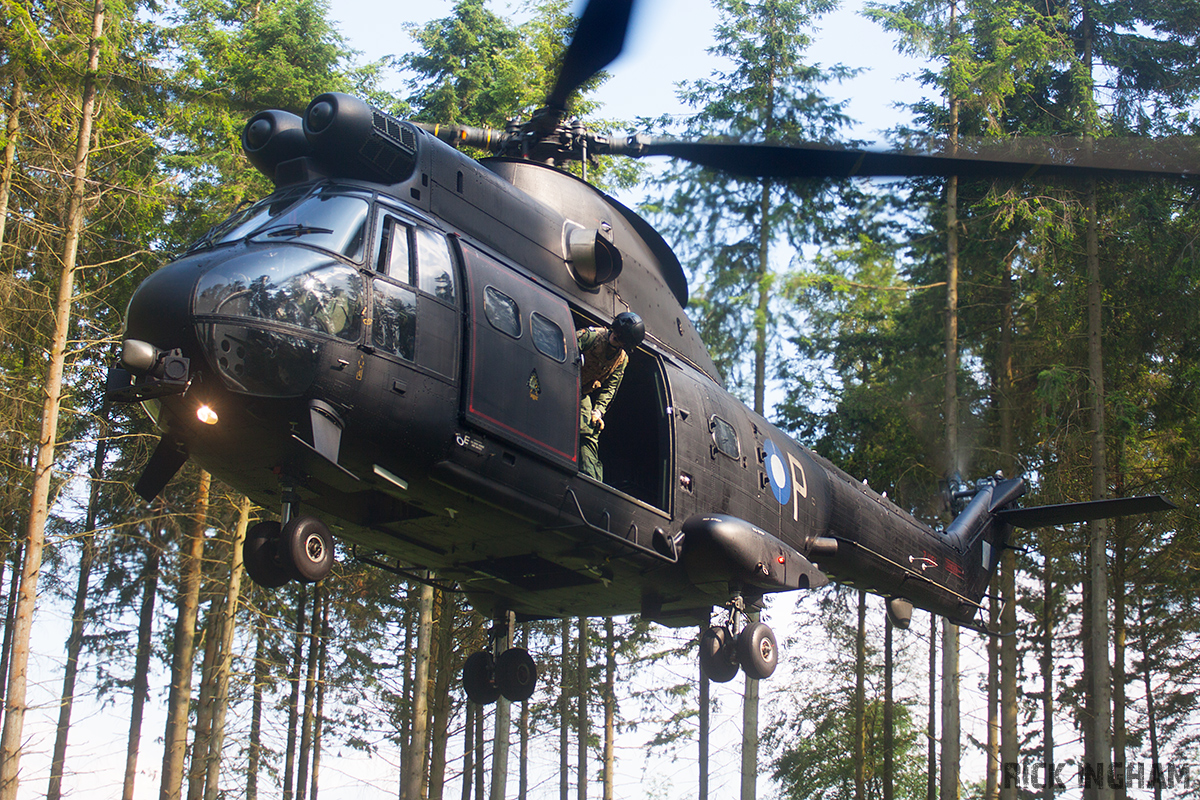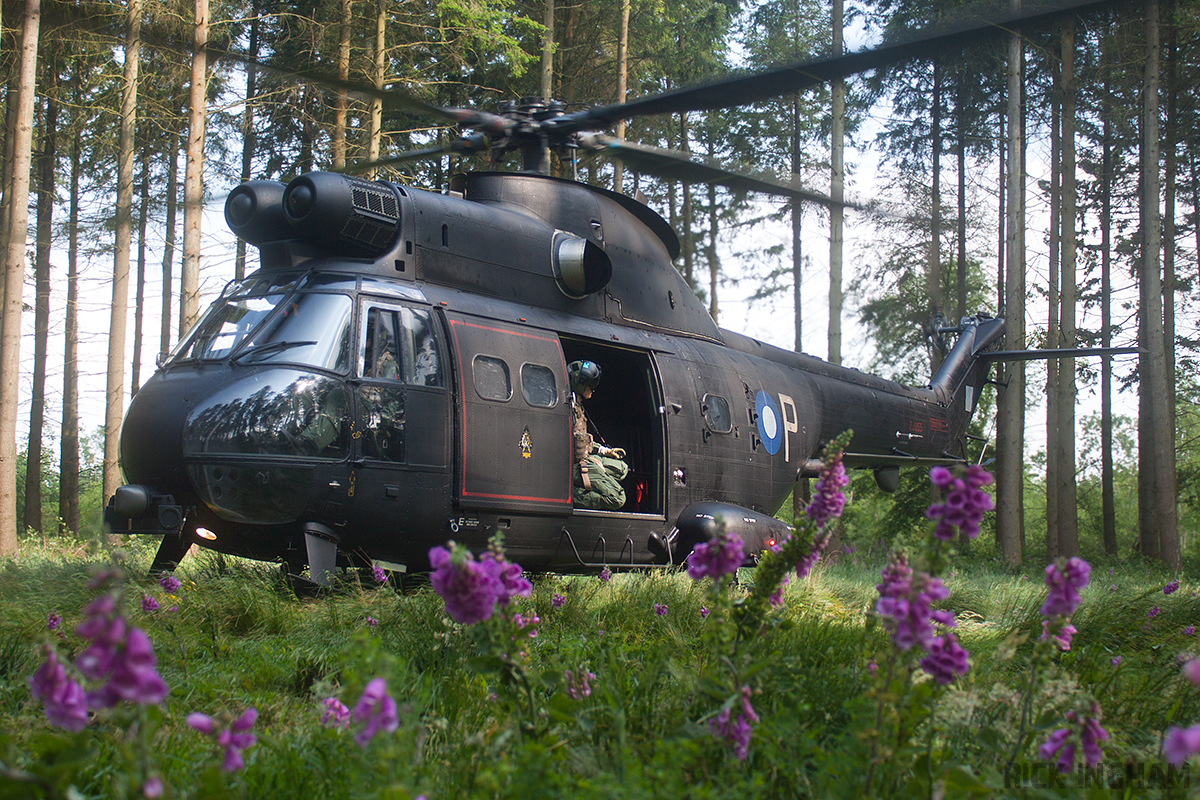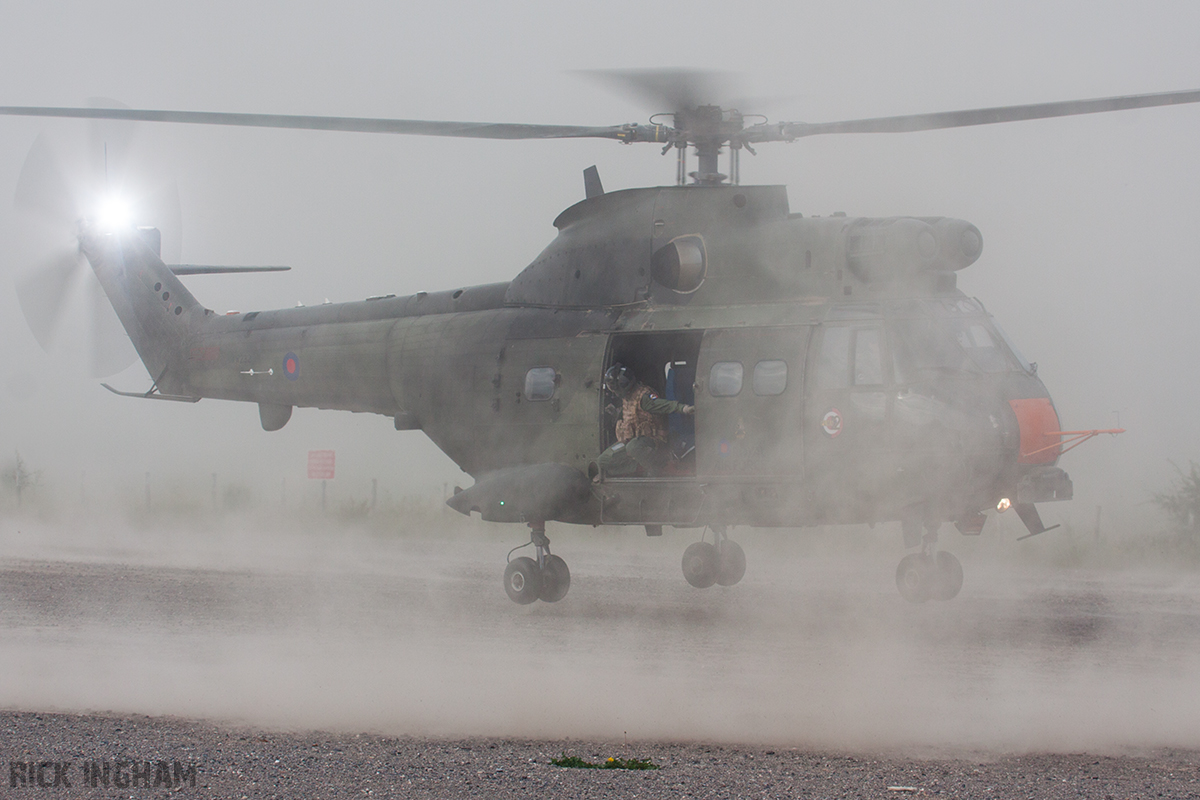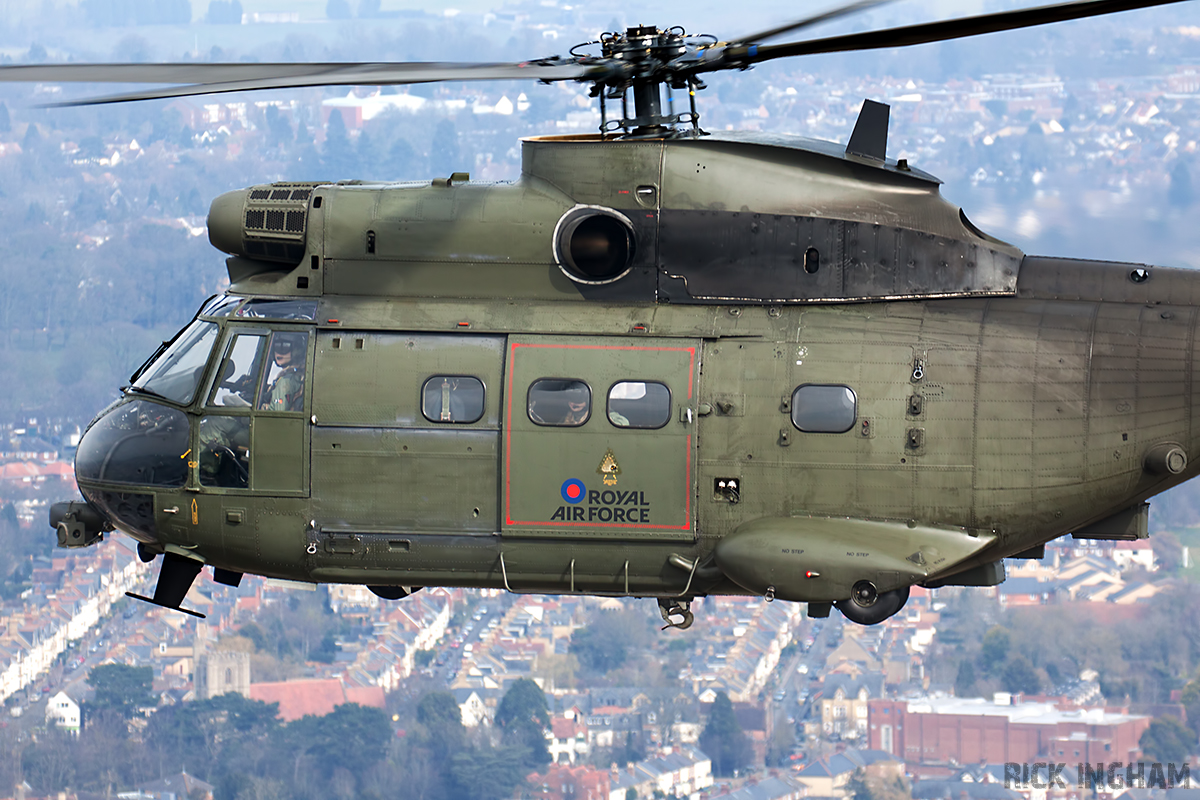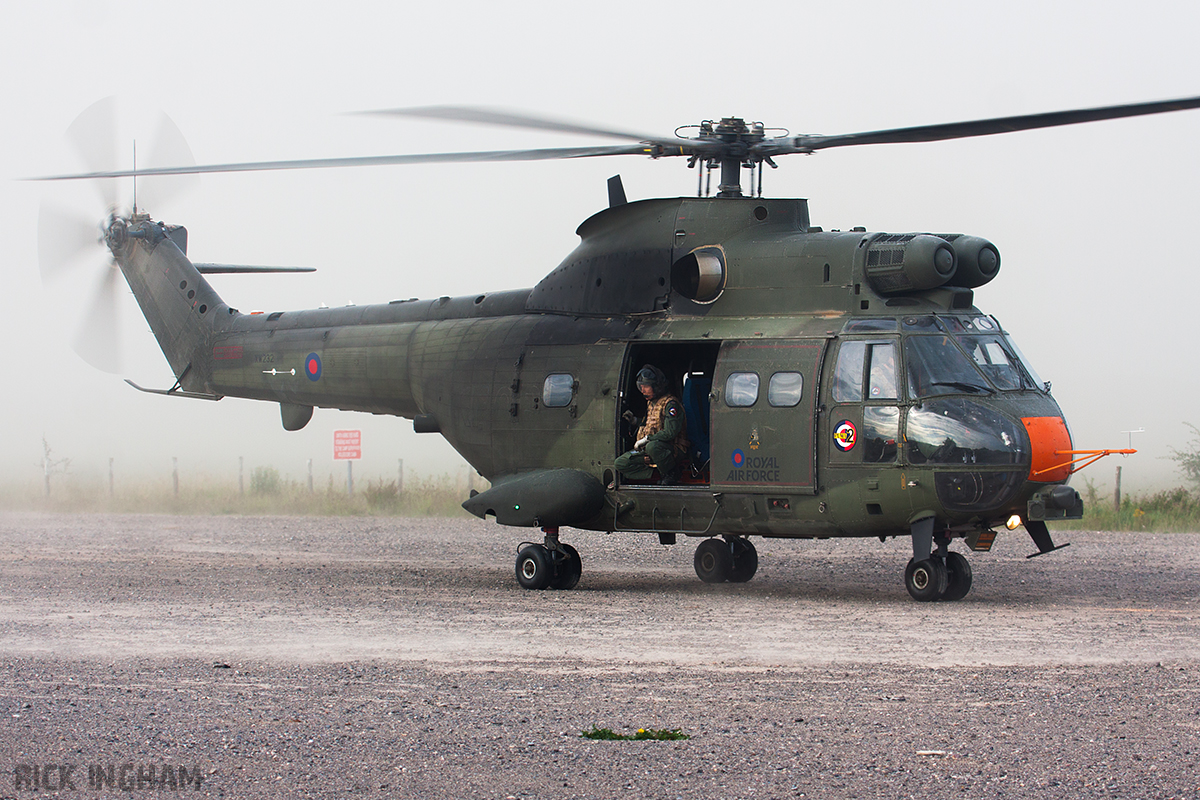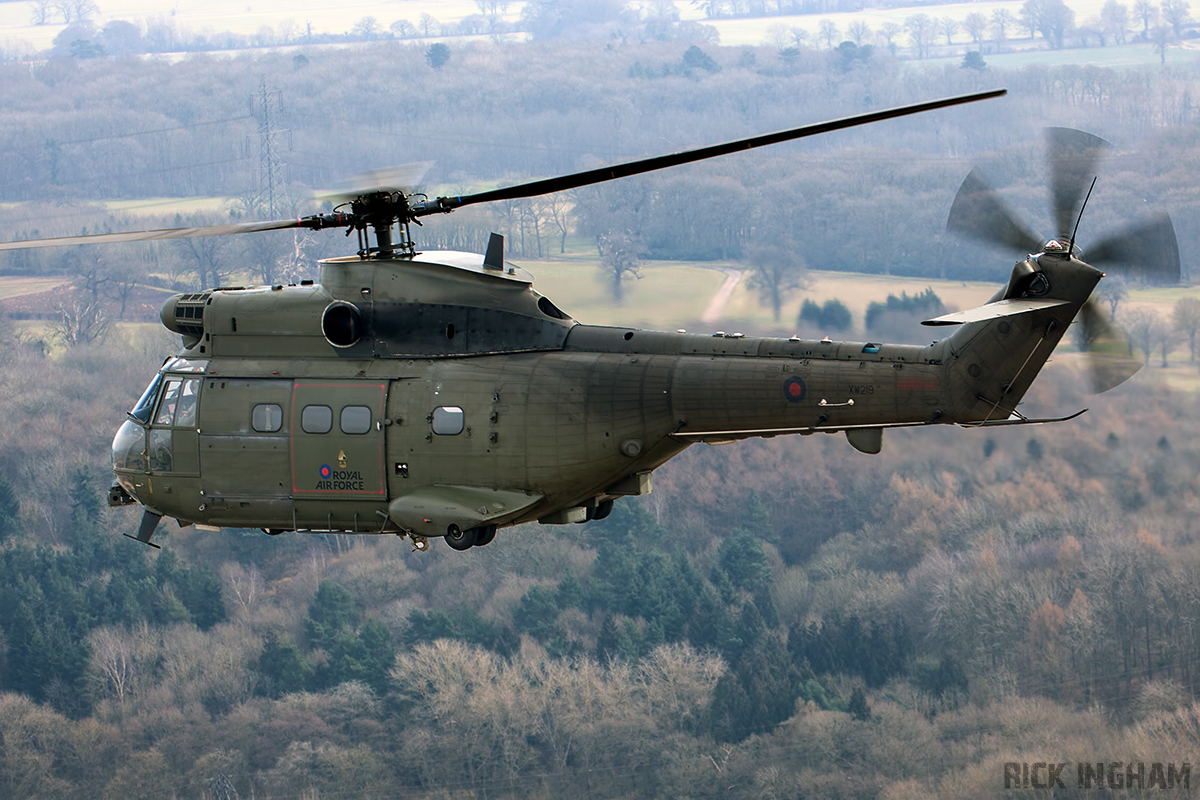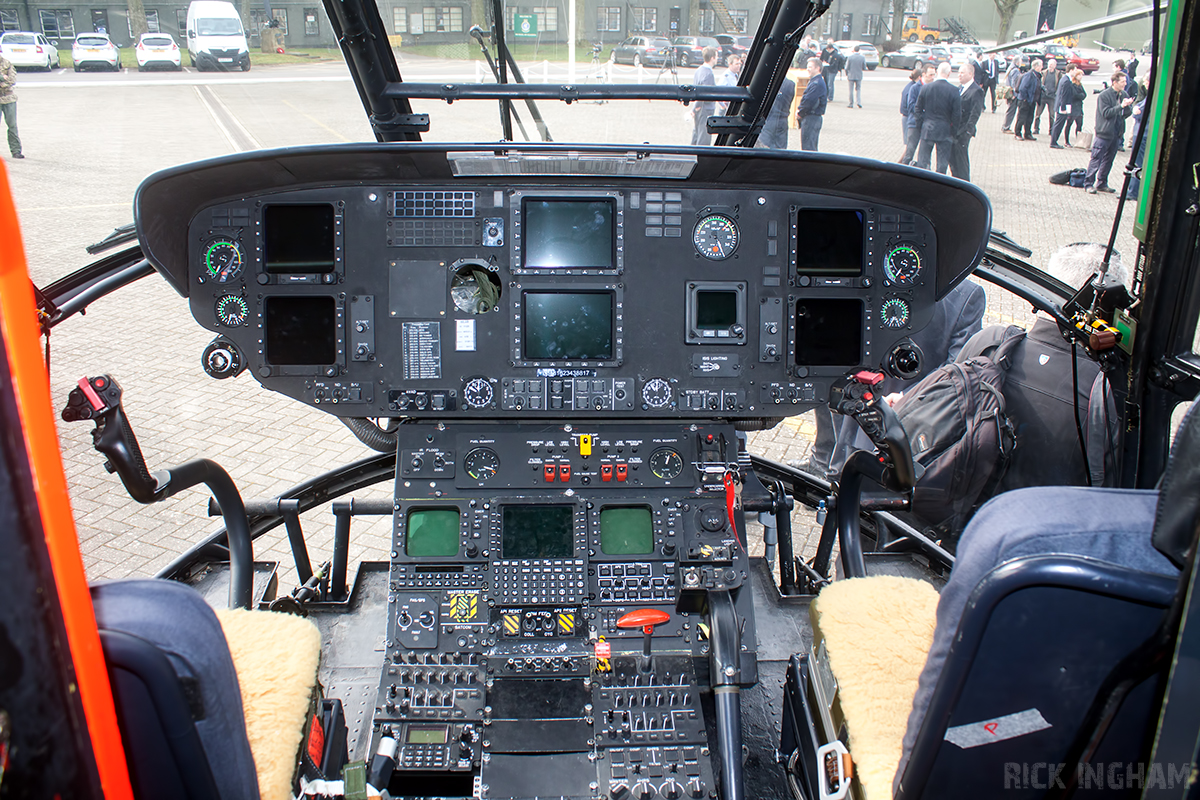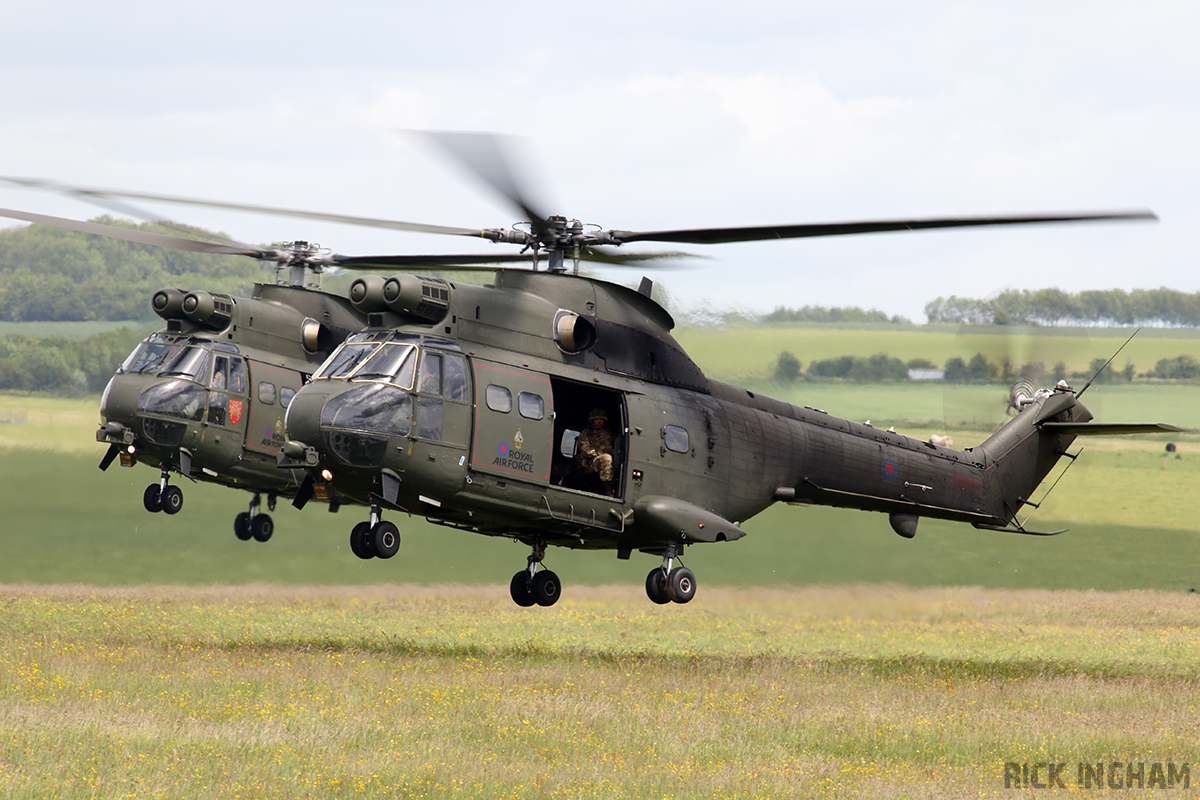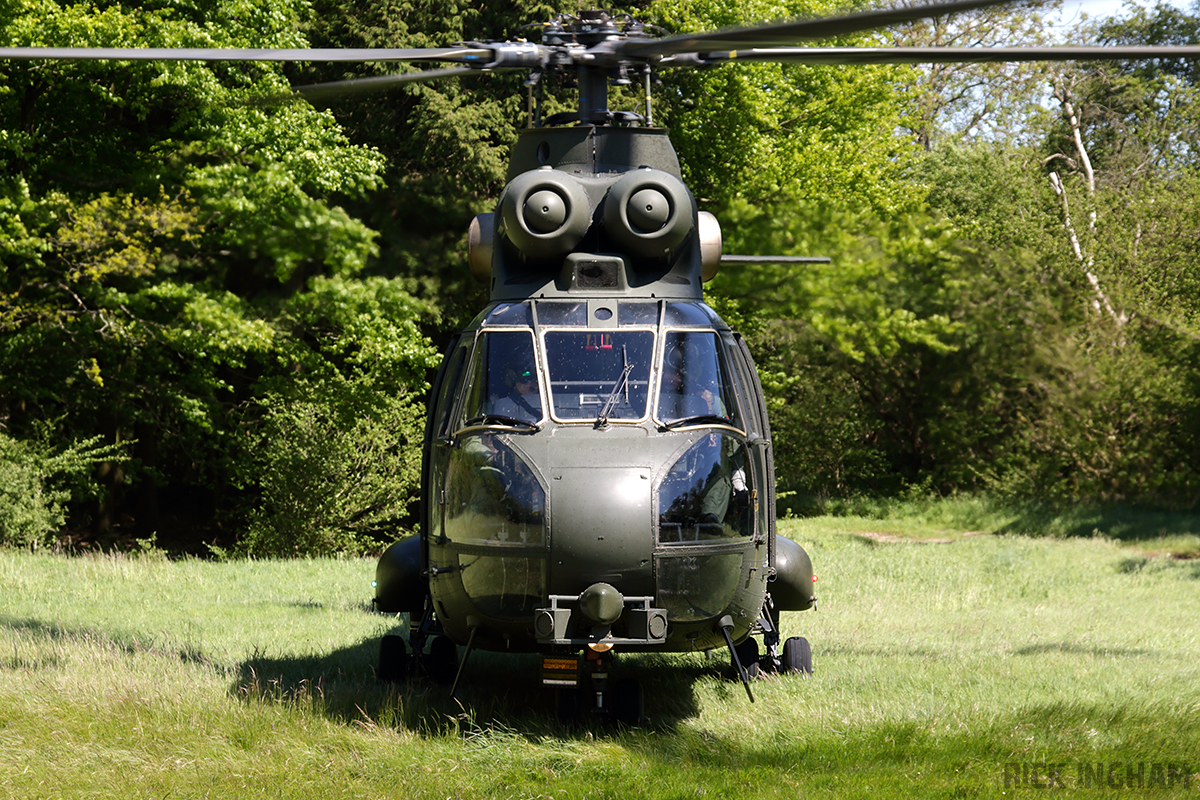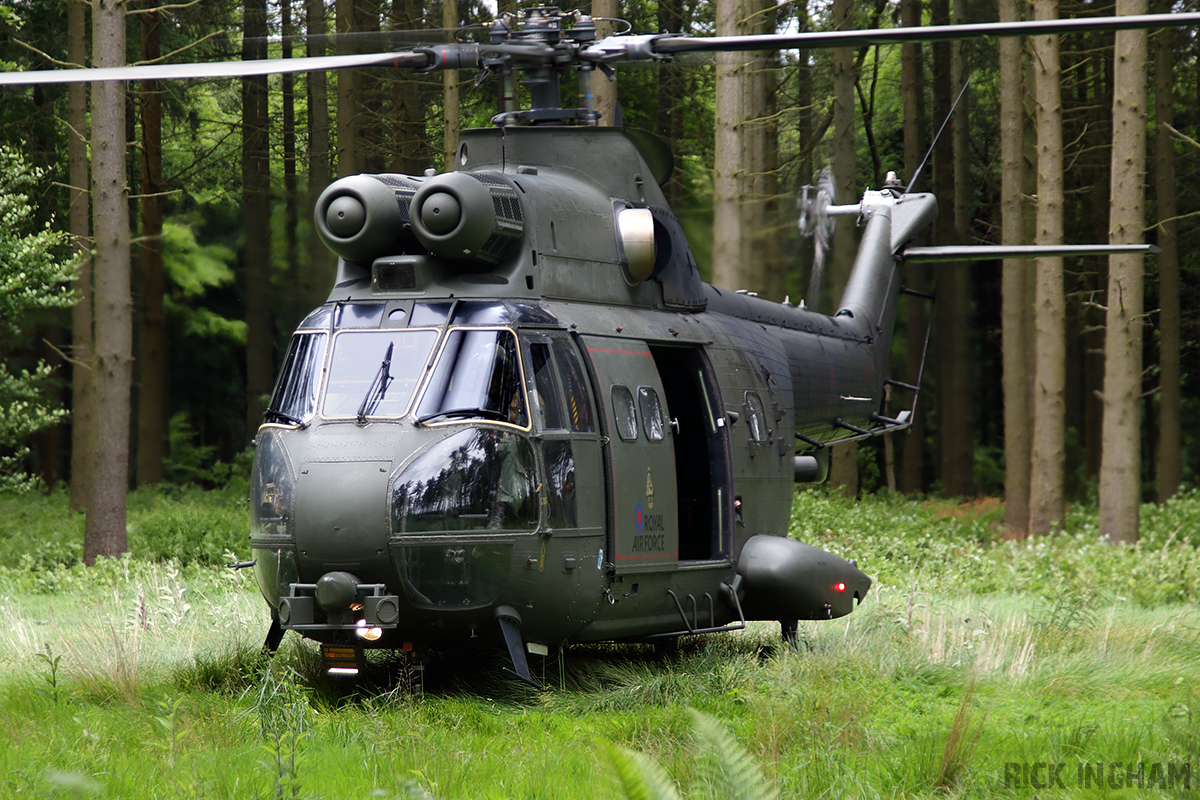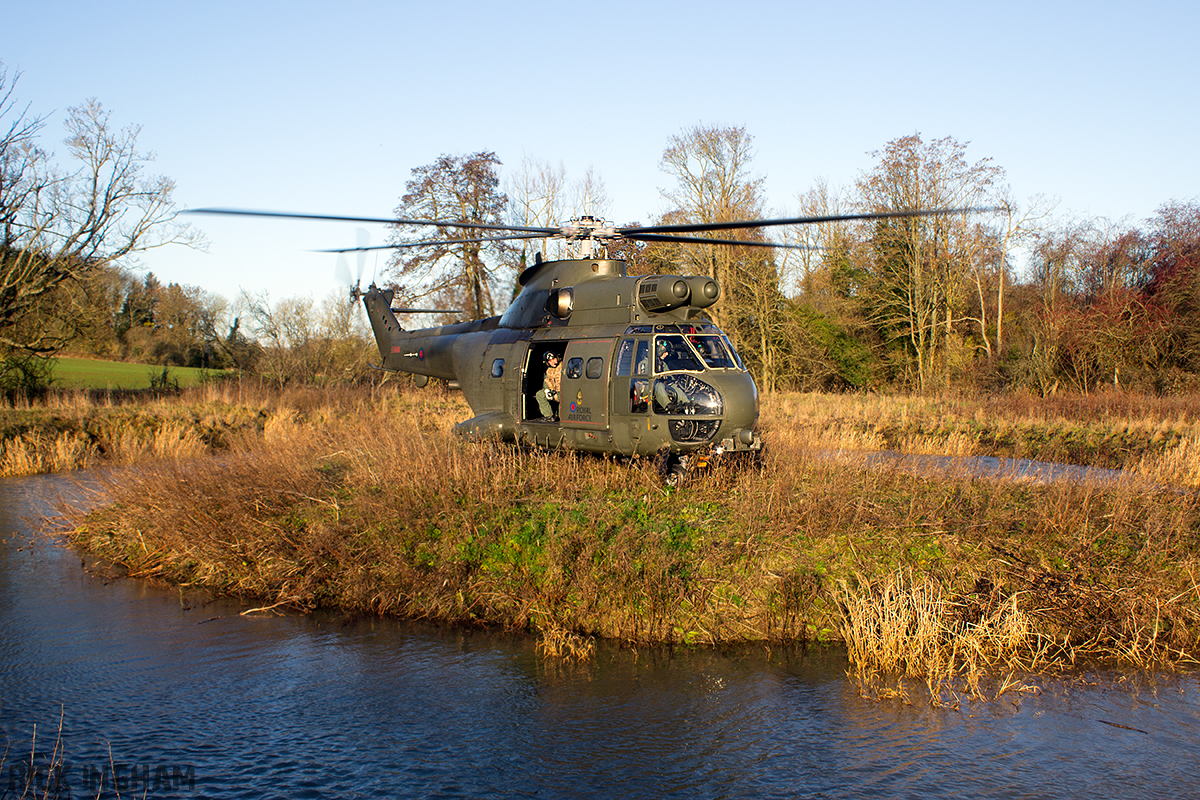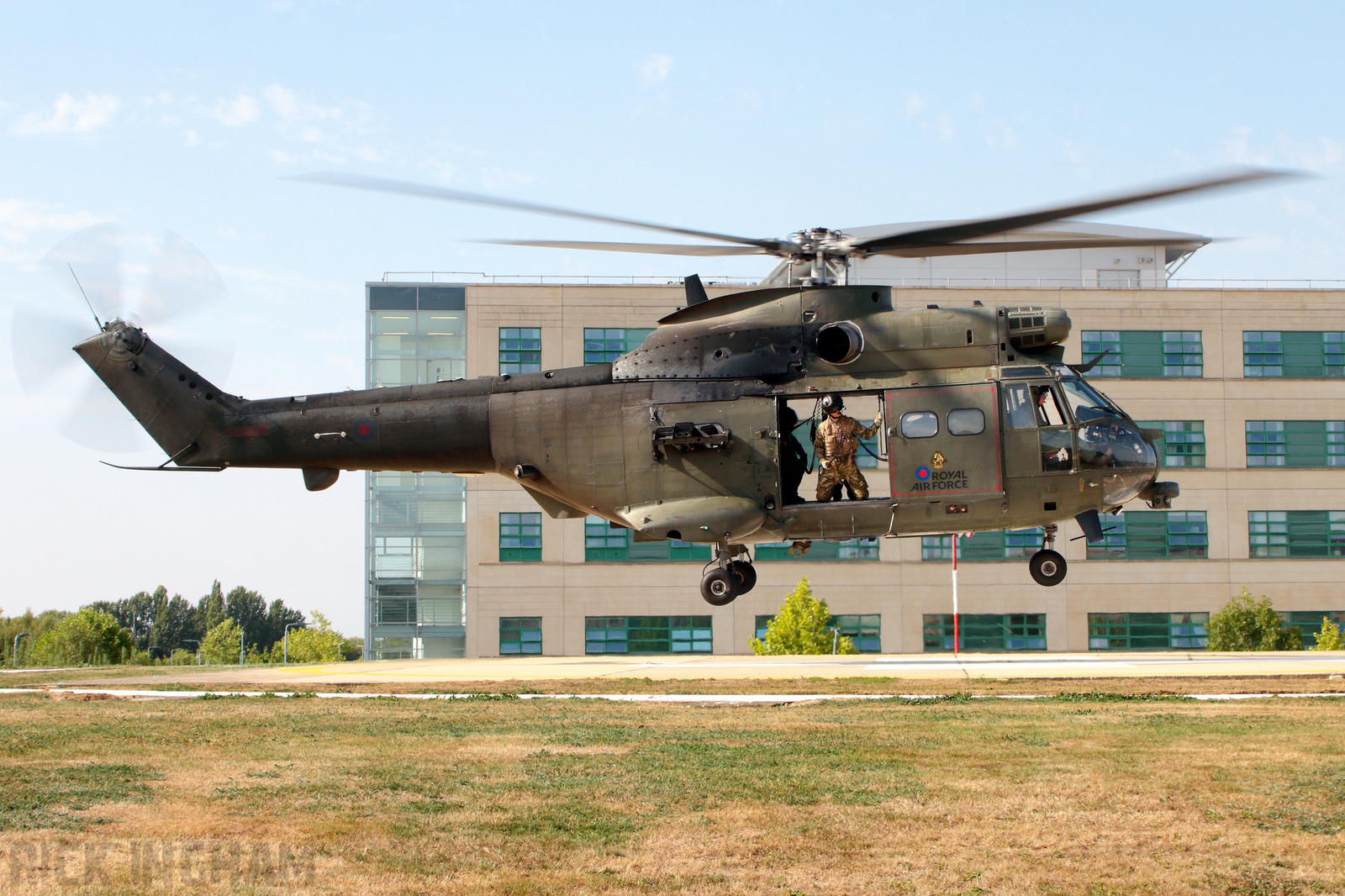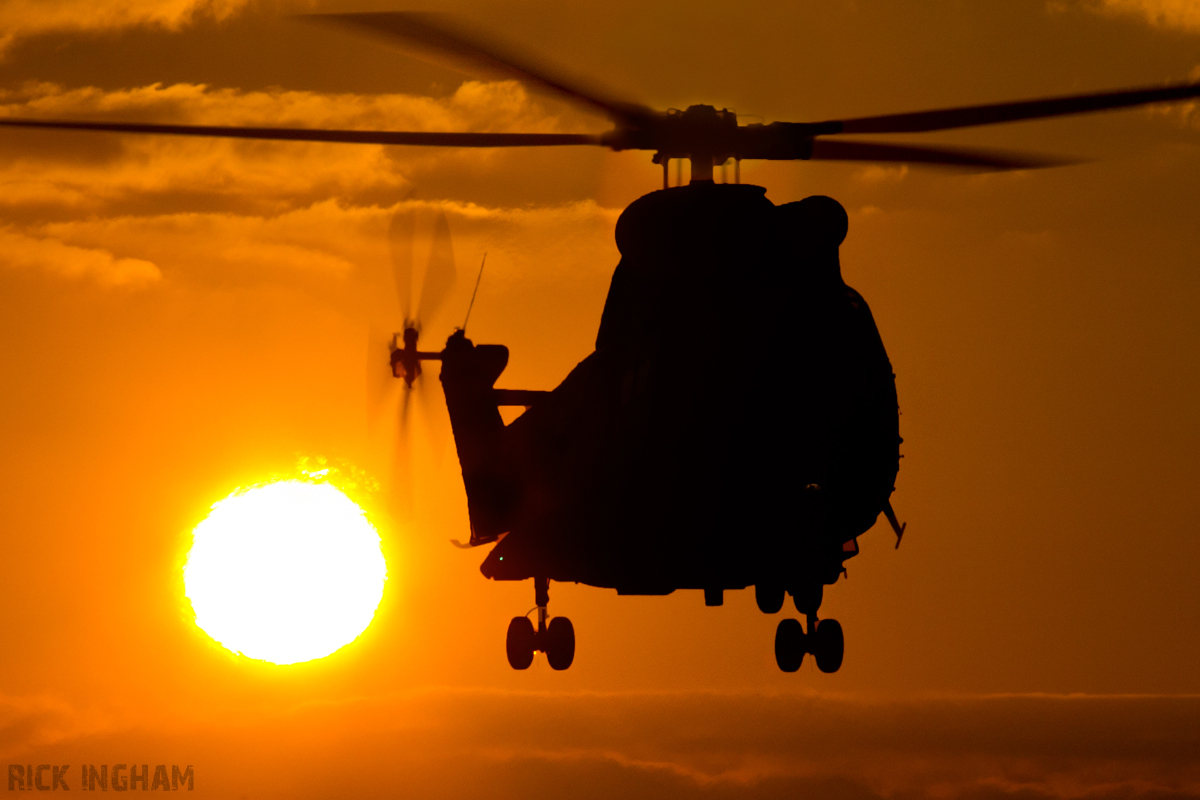During the 1960’s, the French Army (Armée de Terre) released a requirement for an all-weather day/night battlefield helicopter. French manufacturer Aérospatiale (Created from a merger of Sud aviation and Nord) proposed the SA330 Puma. The Puma fitted the criteria perfectly, with it’s two large sliding side-doors, narrow streamed line body and retracting undercarriage, it was built for speed and agility in mind.
Whilst the project was working up, the United Kingdom entered talks with Aérospatiale about acquiring a helicopter to fit their requirements for a medium, all weather, battlefield helicopter.
Beginnings
On 22nd February 1967 the UK signed an Anglo-French agreement for 48 airframes in which Westland Helicopters of Yeovil, Somerset would share joint production. The deal also included the production under license of 292 Aérospatiale SA.341 Gazelle and 40 Westland Lynx by Aérospatiale for the French Navy (Aéronavale).
On 29th January 1971, the first two Puma HC1s were delivered to RAF Odiham. 33 Squadron re-formed on 14th June to begin working up the Puma HC1 and flew their first operational sortie on 29th September of the same year.
Operations
Two Pumas were sent to Belize to form 1563 Flight to provide support to the RAF following Belize’s independence who were there to prevent Guatemala invading. 1563flt worked hard all over the country, moving troops into tight clearings in the jungle and also supporting the SAS on the Guatemalan border. Finally, in 1991 Guatemala officially recognised Belize’s independence and in 1994 the British Force Belize (BFB) moved back to the UK. A smaller British presence remained in the country and formed British Army Training Support Unit Belize (BATSUB) using Gazelle and Lynx.
230 Squadron also began converting to Puma HC1 in 1971 and then moved to RAF Gütersloh, West Germany on 14th October 1980. 230 Squadron stood down on 30th April 1992 before reforming on 4th May at RAF Aldergrove, Northern Ireland to support ‘Operation Banner’. 230 Sqn was one of two RAF squadrons based in Northern Ireland, the other being 72 Squadron with the Westland Wessex HC2s. 230 Squadron rotated it’s 18 Pumas with 33 Squadron's 15 to even out the fleets flight hours due to the high temp of operations. 230 returned to the UK in November 2009, leaving 33 Squadron to assume the peace-keeping duty.
In addition to Northern Ireland, between August and October 1995, 33 Squadron found itself deploying to the Balkans in a Rapid Reaction Force (RRF) conducting flights throughout Croatia, Bosnia and Serbia to stabilise the region. Just four years later, 33 Squadron were back during Operation Agricola when Kosovo’s Liberation Army (KLA) began a campaign of terror against Serbian politicians with the aim to pressurise President Milosevic into allowing Kosovo autonomy. Milosevic responded with brutal attacks on Albanian communities. Serb militia carried out beatings, kidnaps, murder and torture against the Albanian population. By February 1999 100,000 Albanians had been forced out of Kosovo and 200,000 were made homeless. NATO ordered air strikes to stop Serb aggression which lead to the UK sending 19,000 troops. 33 Squadron were tasked with Command and control, CASEVAC and also troop lifting until Op Agricola came to an end in November 2001.
March 2000 saw devastating floods across Mozambique resulting in around 800 deaths and 44,000 people homeless. Four 33 Squadron Puma HC1’s deployed to the area lifting 563 people out of trouble and 425 tonnes of aid in a constant 2 week effort.
Since completing operations in Iraq in the summer of 2009, both 230 and 33 Squadrons rotated to provide dedicated aviation support to British Army training on Exercise Grand Prix/Ascari Thunder in Kenya. Six infantry battalions per year visit the British Army Training Unit Kenya (BATUK) to carry out six-week exercises preparing for deployment. The Puma HC1 returned back to Benson from Kenya just prior to the type retiring from service in December 2012.
Puma2
In 1975 Puma received the first of many upgrades, in the form of the DECCA Doppler 71 Tactical Navigation System. Since then the airframe has received countless upgrades and modifications.
In 2008, the Ministry of Defence started looking into a way to extend the life of the Westland Puma HC1, primarily due to the UK’s high tempo of operations abroad at the time.
On 18h September 2009 the MoD signed a £220M deal with Eurocopter to upgrade at least 28 airframes and to be delivered within 2 years. In December 2012, the Westland Puma HC1 bowed out of service after 41 years of service.
The HC1’s below were either written off in accidents or Withdrawn from use during or at the end of their service.
Withdrawn from use: XW198, XW201, XW202, XW206, XW207, XW208, XW210, XW218, XW222, XW223, XW225, XW226, XW236, XW241, ZA934, ZA937
Written Off: XW200, XW203, XW205, XW211, XW215, XW221, XW227, XW228, XW230, XW233, XW234, ZA938, ZA941
The upgrade to Eurocopter SA330SM+ Puma HC2 began by sending all 24 airframes to IAR Brasov in Romania in partnership with Eurocopter to be upgraded to HC2 with additional work by Chelton, Qinetiq, Rockwell Collins, Selex, Smiths and Thales UK. The first Puma2, XW232 arrived in the UK in September 2012 and was quickly joined by XW216 for acceptance and release to service work with QinetiQ at MoD Boscombe Down. Eurocopter’s first internal qualification of the Puma HC2 was achieved on July 6.
Converted to HC2: XW199, XW204, XW209, XW212, XW213, XW214, XW216, XW217, XW219, XW220, XW224, XW229, XW231, XW232, XW235, XW237, ZA935, ZA936, ZA939, ZA940, ZJ954, ZJ955, ZJ956, ZJ957
The first of Puma2’s many improved features is the new Turbomeca Makila 1A1 Engine, which was around £45 million of the programme’s budget. The Makila gives 500SHP more than the older Turmo IIIC4 engine which creates 40% more power, an increased range with a 25% fuel consumption reduction, extended endurance and ceiling. Effectively the new engine can carry twice as much, three times as far.
The next biggest notable difference is the brand new glass cockpit. The ageing analogue instruments have been replaced by up to date digital avionics and simplified to a much smaller number to ease workload in the cockpit. Also Multi-function displays (MFDs) contribute to the new ergonomic design which can provide the crew with engine parameters, diagnostic information and communications/navigation aids all by a press of a button. MFDs also provide the added benefit of system redundancies for critical instruments so that if a fault occurs in the battlefield, the crews can continue focussing on the mission in hand rather than their eyes concentrating on the cockpit.
After each sortie, the aircraft’s performance data is collected and reviewed through a new diagnostic system which picks up faults before handling crews even notice them. Accelerometers are also installed to monitor vibration which quite often causes damage when untreated.
A brand new encrypted communications system brings a much needed leap in technology from the Puma HC1’s single UHF/VHF box which proved a headache when working with both ground callsigns and other aircraft in the same sortie. The Puma2’s multi-box communications suite makes use of satellite transmissions to enable beyond line of sight communications whilst encrypted for added security.
One of the most important updates to Puma in terms of safety, are the Anticipators.
To produce lift, a helicopter rotates the angle of the rotor blades. The downside to this is that altering the angle of attack produces more drag which slows down the rotor speed (Nr).
The engine governors in the Flight Control Unit (FCU) sense this and increase the engine’s RPM to compensate, but in Puma HC1 the engine response was always behind the demanded power settings. This is known as Static Droop.
Dynamic Droop is when the aircraft is manoeuvring either round a turn or climbing/descending and more power is demanded to compensate for the drag, due to the change in angle of attack. Just like Static Droop, the governors increase the RPM to keep the rotor speed (Nr) at the appropriate level but the engine would be trying to catch up with the power setting. Nr Droop was thought to be the cause of several Puma HC1 accidents. (Link HERE to crash report of XW227)
A much needed addition to Puma2 is the engine’s collective pitch anticipator.
This practically eliminates static/Nr Droop by squirting extra fuel into the gas generator in the engine whenever the collective is quickly raised. This enables the engine to get a head-start and increase power before the blade pitch increases and the rotor speed decays.
Puma2’s other upgrades include:
- Modified multi-purpose Engine intakes
- Main gearbox and electrical wiring upgraded/replaced
- Modified fuselage section
- Ballistic protection
- Fire extinguisher and other equipment upgraded
- Composite tail rotor blades
- Reinforced tail-boom
- Modified Fuel System
- Modified Engine controls and extinguishing system
Looking ahead to Puma2’s future, it’s fully expected to see out the current Out of Service Date (OSD) of 2025 and to take part in many operations between now and then. The Puma’s compact size enables it to be unloaded from a C17 Globemaster and ready to fly missions in just 4 hours. With this and the additional power which also allows operations in hot and high environments, it makes Puma HC2 a perfect platform for Special Forces operations anywhere in the world.

